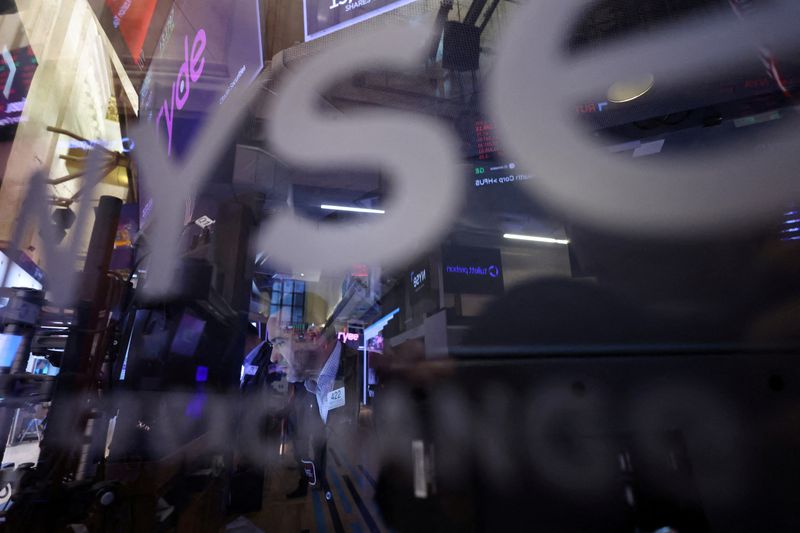Investing.com — A key measure of inflation along with appearances by several Federal Reserve officials will be closely watched by investors in the wake of last’s week’s super-sized rate cut. PMI data will give some fresh insights on the strength of the global economy and gold prices look set to continue a record rally. Here’s your look at what’s happening in markets for the week ahead.
- Inflation reading
The Fed’s favorite inflation indicator – due on Friday – will show if price pressure has continued to moderate even as the central bank has finally started to pull back from the restrictive monetary policy that has been in place to cool the economy.
Economists are expecting the personal consumption expenditures () price index for August to have risen 2.5% on a year-over-year basis.
The Fed’s latest economic projections put the annual rate of the price index falling to 2.3% by year-end and 2.1% by the end of 2025.
The economic calendar for the week ahead also includes a final reading on second quarter , plus reports on , , and as well as weekly data on .
- Fedspeak
Remarks by Fed officials in the coming days will likely shed light on last week’s outsize rate cut and as such will be closely watched.
Atlanta Fed President Raphael is the first to speak on Monday, followed by Chicago Fed President Austan .
Fed Governor Michelle is to speak on Tuesday and again on Thursday and having just become the first Governor to dissent to a Fed decision since 2005, her comments will likely outline her reasoning for that decision, as she cautioned against cutting rates too quickly.
Fed Chair Jerome is to speak on Thursday at the 10th annual US Treasury Market Conference. New York Fed President John Williams and Vice Chair of Supervision Michael Barr will also both speak at the same event. Investors will be on the lookout for any indications of how the Fed is viewing progress on balance sheet reduction.
- Market volatility
The benchmark hit its first closing all-time high in two months last week after the Fed unveiled a hefty 50-basis point rate cut, kicking off the first U.S. monetary easing cycle since 2020.
The index is up 0.8% so far in September, historically the weakest month for stocks, and has gained 19% year-to-date.
But the market rally could be tested if economic data fails to support expectations that the economy is navigating a “soft landing,” during which inflation moderates without impacting growth.
Stocks fare much better after the start of rate cuts in such a scenario, as opposed to when the Fed cuts during recessions.
The market could also become more sensitive to the close election between Republican Donald Trump and Democrat Kamala Harris. Recent polls show a virtually tied race.
“Unless the data deteriorates considerably, we think US elections will start to be more at the forefront,” UBS equity derivative strategists said in a note late last week.
- PMI data
Flash PMI data released from Monday onward, will provide the latest snapshot of the state of the global economy.
The euro area composite Purchasing Managers Index (PMI) has been in expansionary territory for six months and the UK’s for 10 months, bolstering a resilient sterling.
Markets appear happy, for now, that the Fed’s half-point rate cut will help avert a US recession, and by extension a global one. But some areas of concern remain.
In the Eurozone’s largest economy Germany, business activity moved deeper into contraction territory in August and sentiment remains weak. Meanwhile, China’s economy is still struggling putting the world’s number two economy at risk of missing its annual growth target of around 5%.
- Gold records
Gold market bulls are locking in bullion prices surging to fresh records, with a milestone of $3,000 per ounce coming into focus, fired up by monetary easing by major central banks and a tight US presidential election race.
reached a historic high of $2,572.81 an ounce on Friday and is on track for its strongest annual performance since 2020, with a rise of over 24% driven by safe-haven demand, due to geopolitical and economic uncertainty, and robust central bank buying.
Low rates tend to be supportive for gold, which bears no interest.
Analysts at Citi said in a note last week that gold prices could reach $3,000 per ounce by mid-2025 and $2,600 by the end of 2024 driven by US interest rate cuts, strong demand from exchange traded funds and over-the-counter physical demand.
–Reuters contributed reporting

